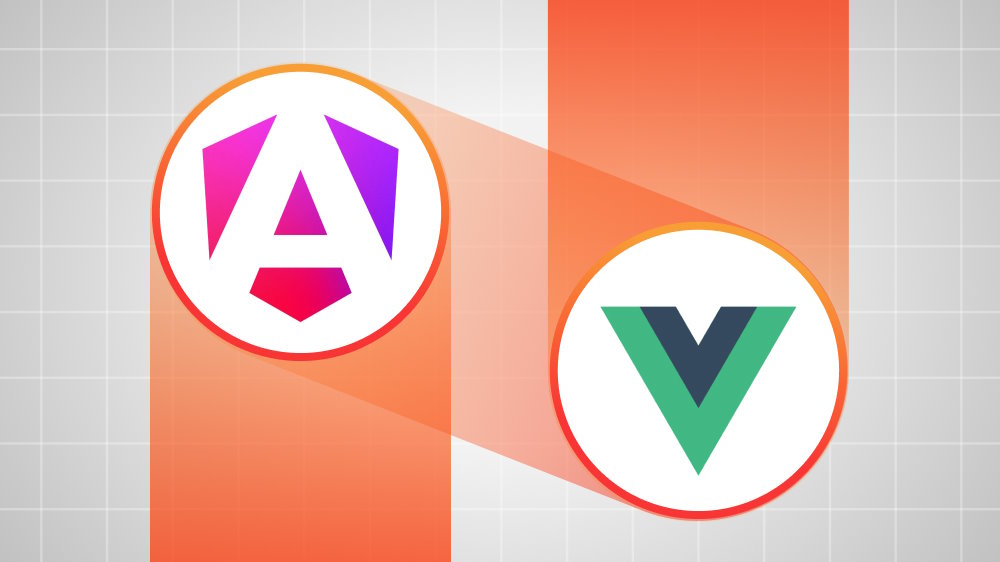Private vs. Public Blockchain: How Do They Differ?

Content Map
More chaptersBlockchain is a popular topic in the technology world. It has been around for ten years but only recently gained attention due to its potential use in helping with many real-world problems. Blockchain technology is decentralized, meaning that it exists on multiple computers simultaneously, and all updates are replicated across them. The blockchain stores data that can’t be altered or hacked because of the encryption process used to store information within blocks, making it an attractive choice for storing sensitive information like medical records or financial transactions. There are two most popular types of blockchains: public blockchain and private blockchain.
The question of private vs. public blockchain is hotly debated among the cryptocurrency community. This article will help you overview these two types of blockchains to see what the differences are and help you determine which types to choose. However, before diving deep into the private vs. public blockchain differences, we will first go through some basic information about blockchain technology.
What Is Blockchain Technology?
Blockchain technology is a continuously expanding list of records called blocks that are connected and protected using cryptography. Typically, each block contains a cryptographic hash pointer as a link to the previous block, a timestamp, and the transaction data. By design, blockchains are built to be resistant to modification of the data.
Blockchains can serve as an open, distributed ledger. It can record the transactions between the two parties in a verifiable and permanent way. A peer-to-peer network monitors a blockchain collectively adhering to a protocol for validating new blocks for use as a distributed ledger. Once recorded, the data in given blocks cannot be changed retroactively without the alteration of all subsequent blocks, requiring the agreement of the network majority.
Blockchain has three main characteristics:
- It’s decentralized.
- It’s distributed (i.e., there is no central point of jurisdiction or control).
- It’s public (i.e., anyone with an internet connection can view the ledger).
Blockchain technologies are at the leading edge of a significant transformation in how distributed ledgers work, away from complicated consensus algorithms and towards more efficient cryptographic techniques. Additionally, several new blockchain platforms are leveraging data storage and messaging layers to provide developers with powerful tools to build applications that go beyond financial transactions. The goal is for these underlying technologies to be flexible and universal enough to be used for a wide range of apps, not only those related to money and finance.
There are currently two main types of blockchain technologies: public blockchain and private blockchain (Others such as hybrid and consortium blockchains). However, we are only going to dive deep into two primary ones in this article.
What Is Private Blockchain?
A private blockchain is a subset of public blockchain that can set up consensus algorithms and rules to meet the requirement of different industries, business cases, and scenarios.
The term “private blockchain” refers to a decentralized ledger with pre-defined conditions for transactions or data exchanges among participating parties. The only difference between private blockchains and traditional databases with controlled access is that private blockchains are distributed across a limited number of nodes.
The consensus algorithm might vary depending on the blockchain network’s purpose, with features such as security, privacy, and speed being prioritized. A company may use a public or private blockchain depending on its specific business case, desired transparency, and control level.
Pros & Cons of Private Blockchains
To better understand the concept of a private blockchain, let’s have a closer look at the pros and cons of this type of blockchain platform:
Advantages of Private Blockchains
- High Security - Blockchain is a distributed ledger technology that stores all transactions in a public forum. Between private blockchain and public blockchain, private blockchains are more secure than public ones mainly because it requires authentication to read the information on the blockchain. In contrast, anyone can view information on a public blockchain network without having to log in.
- Triple-Entry Accounting - The private blockchain can easily integrate with other chains or databases without complicated integrations. While public blockchains are fully decentralized, it is challenging to integrate them with other systems. Moreover, the private blockchains can be audited by trusted third parties, which makes it a triple-entry accounting system.
- Higher Transaction Capacity - The private blockchain also has a faster transaction speed than the public one. A public blockchain can only process a maximum of 7 transactions per second. However, a private blockchain can process a maximum of 100 transactions per second.
- Data Confidentiality - Participants can encrypt transaction data, and only a few selected parties can decrypt it for viewing.
- Better Customization - Private Blockchains are customizable to the needs of the company. The data stored within the private blockchain remains confidential, which ensures that it is not accessible by the public. Furthermore, you can also customize the consensus algorithm to fit your need.
Disadvantages Of Private Blockchains
- Centralized - All participants are known, so the network is centralized, i.e., one trusted organization has to control it.
- Scalability - It is limited in terms of scalability as changes have to be approved by the governing body, making it slower to execute transactions and achieve consensus.
- Regulatory - Since participants are known, it is difficult to set up a regulatory framework for the system.
Why Use Private Blockchain?
Private blockchains have significant advantages over their public counterparts. They ensure security by keeping them hidden from the general public and can be managed by individuals within an organization. Also, smart contracts can be programmed with some conditions making it more secure and efficient for businesses to transact without the supervision of third parties.
Another advantage is that they are easier than public blockchain to implement. For instance, if you want to run a game on Ethereum, constructing a game world state will require some transactions, which might not be practical for a public blockchain. Using private blockchain would bring the transaction costs down and enable developers to create large-scale games on Ethereum.
Private blockchains can also enable cross-organizational and cross-border transactions where participants don’t know or trust each other. For instance, in the agriculture industry, farmers sell their produce to a buyer who exports to another country where they have a contract. Keeping each transaction step on a separate blockchain would make it easier for farmers and buyers to track their products and contracts.
A private blockchain can be used in many application areas, which public blockchain cannot. It can revolutionize businesses, especially in finance, banking, cyber security, and healthcare.
What Is Public Blockchain?
Blockchain technology has been evolving to become the foundation for a new infrastructure model called Public blockchain.
A public blockchain is known as an open, decentralized ledger that records transactions shared among many users. The data are stored in blocks that are then chained together using cryptography proofs and linked to the previous block, creating a chronological record of all transactions or interactions. Thus, the entire data history can be traced back to the chain’s origin and is easily accessible by any participant.
Furthermore, the ledger is publicly available, and records reside in shared and replicated among users where no single user or group controls the data or the system itself.
How Public Blockchains Work
Public blockchain aims to create an infrastructure that allows people who don’t know each other to trust a shared digital ledger and transactions. The ultimate goal is to provide the highest level of transparency while keeping identities private and maintaining user anonymity and privacy. Public blockchain networks are decentralized, meaning no single entity or institution controls the data stored in them. Anyone with an internet connection can upload data into the network, verify transactions and participate in the public ledger.
They are protected by design as data is stored on a decentralized system, making it harder to hack than traditional databases. The blockchain uses cryptographic hashing, which creates many unique strings of digits and letters for each block, preventing any data from being modified without changing the entire string, which is extremely difficult as hash function is one way. Public blockchain provides a new type of governance model that is democratic, transparent, and decentralized, allowing users to have more power in the decision-making process.
All transactions are immutable, which means they cannot be changed once they’re on the blockchain network. This makes it easier for enterprises to use as they no longer have to spend time and resources on auditing and validating transactions as they can trust the public ledger. Among the notable projects of public blockchain are Bitcoin, Ethereum, Ripple, and Litecoin.
Pros & Cons of Public Blockchains
Just like private blockchain, public blockchains also offer you both advantages and disadvantages. By having a closer look at the pros and cons, you will better understand how different private vs. public blockchain is.
Advantages Of Public Blockchains
- Open Environment - Public blockchains are open-source, which means that the code is publicly available, and anyone can participate in a public blockchain network. This is because there’s no single centralized machine that must approve certain transactions before they’re processed. This means that you can process transactions yourself instead of going through a central authority, thus making it much more democratic. This feature can be a big advantage because it means that there is wide community support for the project. If most people in the community want to make changes to the protocol, they will have an easier time agreeing about how to implement these changes.
- Anonymity - Bitcoin is an example of the public blockchain, so transactions are recorded anonymously.
- No Central Authority - One of the advantageous features of public blockchains is their true decentralization. No central authority controls a public blockchain because all participants have ownership over what happens on this type of network. This means that no single entity or company has control over what can or cannot occur. All decisions are made by the community, which ensures that no one person can bend the rules in their favor. Public blockchains tend to use the consensus algorithm like proof-of-work or proof-of-stake to secure transactions and ensure that all the participants in this network do not engage in fraudulent activities. These algorithms are essential for the security of a public blockchain since they prevent hackers from attacking the network.
- Transparency - Public Blockchains also provide full transparency and trust. This means that there is a permanent record of all transactions on the blockchain. Someone can’t alter or erase records without getting caught because all the participants in the network will notice changes as soon as they are made.
- No Reversion - No one can reverse transactions on a public blockchain. In contrast, transactions in a private blockchain can be reversed by the person or company controlling the network. It means when a transaction is verified and recorded on a public blockchain, it cannot be reversed at all.
Disadvantages Of Public Blockchains
- Privacy Issues - Data is recorded publicly, which means that anyone can read or view data on it. This puts user privacy at risk as all transactions are public.
- Centralized - Due to the uncontrolled nature of transaction formation, the blockchain is more centralized than private blockchain.
- Scalability - Due to increased usage, public blockchains have been encountering scaling issues.
Why Use Public Blockchain?
Public Blockchain also offers various advantages that convince you to utilize it. One of the core benefits of a public blockchain is the low fees. The transactions usually cost fractions of a penny. This is a reason why people are interested in cryptocurrencies because they can do business without worrying about high transaction fees.
The next benefit of a public blockchain is that people can use it anonymously. They do not have to give their personal information to use a public blockchain if they are not sure whether to reveal that information online or not. Also, public blockchains are often cheaper to maintain because they do not require central servers to host all the data. This is because the nodes in the network allow for a distributed architecture and maintain copies of all data.
Moreover, public blockchain platforms have no downtime. Users can use the system at any time of day or night, and they will be able to connect with other users. People do not have to worry about the system being down because there are no shutdowns that would affect their business operations. The public blockchain platform is completely transparent. Everyone using the system can see all transactions occurring throughout the blockchain, which helps make transactions more transparent and trustworthy.
Additionally, people can use public blockchains anonymously. This means they do not have to give their personal information to use a public blockchain platform, which provides some peace of mind for those who are unsure if they want to reveal that information online. The last but not least benefit of public blockchains is immutability. Once a transaction has been recorded, it cannot be altered, creating record permanence which gives users security when using the technology.
Private Vs. Public Blockchain: The Differences
The simplest way to understand the differences between public blockchain vs. private blockchain is by looking at Bitcoin. As you can see, anyone can participate in the transaction process on a public blockchain. This means that you don’t need permission to send or receive bitcoins from others. On the other hand, private blockchains require an invitation and must maintain authorization. They do not want to expose sensitive information such as financial records to everyone on the network.
A private blockchain can be best applied to a situation where there is a need for heightened security and control over the distributed information. To put it simply, you should use a private blockchain if you want to add extra layers of encryption. In theory, this means that only specified individuals should have access to specific transactions. This keeps things secure while also adding extra privacy for those involved.
Public blockchain networks are far more transparent, making them difficult to adopt into industries requiring a high-security level. However, this doesn’t mean that public blockchains should be avoided at all costs. On the contrary, private-public blockchain solutions have been gaining traction for many years now, with the most notable being R3. R3 is a financial technology firm that has partnered with over 40 of the world’s leading banks to develop Corda, a private blockchain platform for global banking.
In short, the main difference between public and private blockchains is that anyone can join the network in the case of public blockchains. In contrast, private blockchains usually have only a certain number of participants. In addition, anyone who has access to the ledger can read and write information on a public blockchain, while private blockchains allow anyone to read data, but only authorized parties can write new transactions or modify them. Thus, every participant can join the network, but it doesn’t mean they all have equal rights.
The Bottom Line

In conclusion, understanding the difference between a private and public blockchain will help you determine which one to use in specific scenarios. While there are many other types of blockchains available, these two offer a good overview of how they work and what you should consider when deciding on your next project.
So, the question is: Private vs. Public Blockchain, which one should you use? It depends on your business needs as well as your company’s culture of transparency vs. confidentiality.
This article has led you through some pros and cons of private blockchains and public blockchains so you can distinguish them and choose the suitable one. Private blockchains are an excellent option for companies that have more stringent privacy requirements. Public blockchain networks, on the other hand, allow anyone to join and participate in transactions.
We hope these insights help you make an informed decision about how to approach blockchain technology for your organization’s specific purposes.







